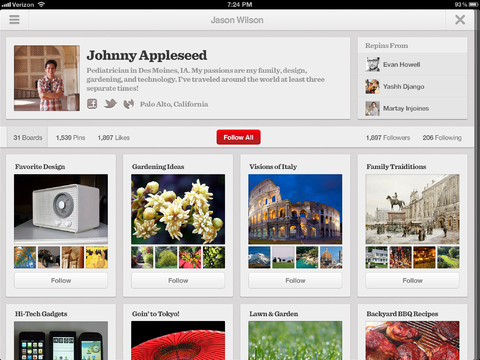Despite what you’ve heard over the course of numerous Google updates, SEO isn’t dead – not even close. That’s not to say someone doesn’t need to come along and put a bullet in its nerdy little head and end its existence.
SEO Isn’t Dead
Search Engine Optimization (SEO) has always been about Content, Site Architecture, and Inbound Links. Those three things make up the heart of SEO work and they haven’t changed a bit in the 17-plus years I’ve been doing SEO for the companies I’ve worked for and the clients I’ve billed. What has changed is the ability of the low-end of the profession’s gene pool, the so-called “Black Hats,” to game the system.
Black Hat SEOs are easy to find; they’re the bunch that complains the loudest after each Google update. Always claiming its some sort of great conspiracy aimed to keep the little guy down, when in fact they’re really just getting caught for doing something they shouldn’t have done in the first place. Black Hats are the reckless drivers of the search engine marketing world that get caught speeding and blame the cop for catching them.
In a recent article, it was even said that there were acceptable levels of Black Hat SEO. The difference was, as long as the client is aware of the risk, and you really, really needed to do it because you’re on a tight schedule, then you were totally cool. This is like saying that there’s an acceptable level of steroids in professional sports and that, as long as the athlete is aware of the risk and he didn’t have time to train properly for the game, it’s totally cool. Black hat SEO is black hat for a reason; because it’s bad. You don’t get to complain when you get caught doing it.
Is Google a completely innocent bystander in all of this? Of course not; it’s just the stuff that the SEOs of the world likes to give them grief over usually isn’t anything that’s really bad. It’s the equivalent of catching Al Capone for tax evasion.
SEO isn’t dead. It’s all around you. People create new content every day; great content on well-built sites, that is worthy of getting linked to by other sites. But the problem is, if you really think about it, this isn’t really what people want to believe SEO is at all. They want SEO to be the little tricks and tweaks, the endless hours of competitive research, the begging of other sites to include a link to yours, the ratio of keywords to regular content, and so forth. You know, all the crap that takes us away from what’s really important.
Why SEO Needs to Die
Why does SEO need to die? Because it’s a distraction from the purer faith of marketing. If you’re into religion, Marketing is the God with the capital G and SEO is the golden calf at the base of Mount Sinai.
Google didn’t make up its rules out of the ether; it’s all stuff you’re supposed to be doing anyway if you own and operate a website. You’re supposed to have content on your site that is interesting and relevant to your business. This content is supposed to be interesting enough for you to get linked to by other websites that find it interesting and relevant. And you’re supposed to build the site properly, without duplicate content, or bad title tags, or crappy META tags, or poor HTML, etc. These are all things that you should be doing, even if there wasn’t a Google to tell you to do it that way to show up well in their search engine.
The purpose of your website isn’t to rank well in Google. The purpose of the site is to help promote your business, or cause, or whatever. The purpose of marketing and its many functions (advertising, public relations, etc.) is to help get your business noticed by others, and your website is part of that mix.
Jim Hedger and Dave Davies recently interviewed me on their show on Webmaster Radio after I made some comments in another article about how Black Hat SEO was never okay. During the interview, Dave had the insight to ask about link building, and the fine line between going out and paying a company to put links on other websites for SEO purposes and someone using public relations and/or social media in the hopes of getting links to a site.
The difference here is that you would be doing public relations and social media even if Google didn’t exist at all. You’re supposed to be using public relations and social media and advertising and promotion and a dozen other tools in the marketing tool chest to let the world know you have a website that sells a product. Hopefully, you’ve taken the time to put content on that website about that product, content that your target audience would find interesting, and that other site owners would find interesting enough to put a link to your site on theirs. And hopefully, just hopefully, you took the time to build your site properly in the first place so that the users can use the damned thing.
These are all the marks of great marketing for a website, and not coincidentally, they are the things that Google rewards you for with better rankings on their site. It’s never been about the little tweaks, or the ratios, or the tools, or anything else. The only reason SEO was previously associated with these things is because Google hadn’t found a way to catch people doing them yet.
Stop… Just Stop
In order to kill SEO, we need to change the focus of why we perform SEO related tasks in the first place. Lets instead focus on getting things right the first time. Let’s recall that when you launch a website, it’s supposed to be built correctly from the get go. Let’s create sites full of rich content that people want to read, that people would gladly pay to read if they had to, or at the very least, inspire people to buy your product and service. Let’s create sites and site content so amazing that people ask you to link to you and you’ll be gracious enough to say, “of course!” because you know it helps in more ways than what SEO can offer.
Finally, let’s stop referring to the functions of SEO as a “trick;” there’s no trick here, it’s just marketing. You’re supposed to be doing this anyway, quit making it sound like we’ve invented something new and instead get better at something we should have learned in college.
So, let’s kill SEO… let’s do it together. It needs to go away. It’s making us all crappy marketers and poor advertisers. It’s making us have to defend our very profession as a whole… and as marketers; don’t we have to do that enough already?





















